【ChamNet】2019-CVPR-ChamNet: Towards Efficient Network Design through Platform-Aware Model Adaptation - 论文阅读
ChamNet
2019-CVPR-ChamNet: Towards Efficient Network Design through Platform-Aware Model Adaptation
来源: ChenBong 博客园
- Institute:Princeton, Facebook, UC Berkeley
- Author:Xiaoliang Dai, Peizhao Zhang, Bichen Wu, (FBNet) etc.
- GitHub:https://github.com/facebookresearch/mobile-vision 600+
- Citation:100+
Introduction
基于2个平台上的latency对input/output channel敏感性的观察, 认为需要做platform-aware的结构搜索
使用3个predictor(Acc, Latency, Energy), 在已有的backbone网络(MBV2, ResNet)的基础上, 根据目标平台的需求(Latency, Energy) 快速调整block的配置(channel, expand ration, depth), 得到满足要求的高性能网络结构, 再经过retrain后部署
不同平台上, Acc-Latency/Energy 的 sota tradeoff
Motivation
- flops只是计算开销(Latency/Energy)的proxy, FLOPs与具体设备上的开销不一定成正比
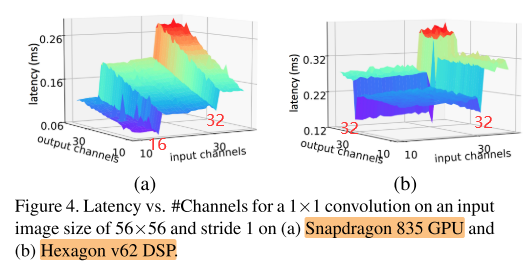
- 不同的硬件平台对不同宽度的网络有不同的优化,导致FLOPs上细微的差距, 在Latency上有很大的差距 e.g. (32,32) vs (33,33)
- 不同的硬件平台, 对输入/输出通道的敏感度也不同
Contribution
Method
3个predictor
Accuracy Predictor
高斯过程GP
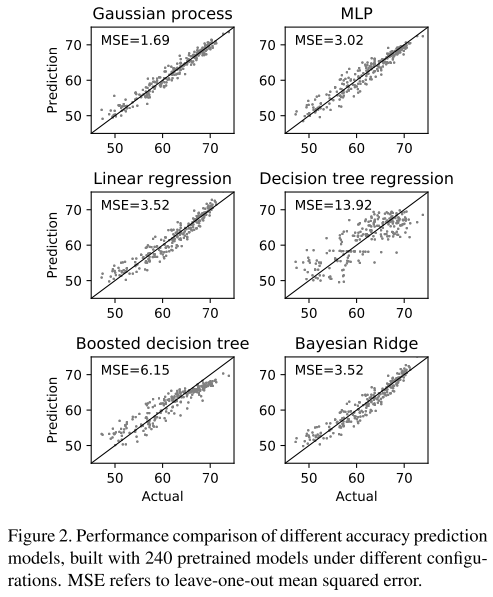
Latency Predictor
构建目标平台上每个opration 的 Look up table, 再求和得到完整网络在目标平台的Latency预测值
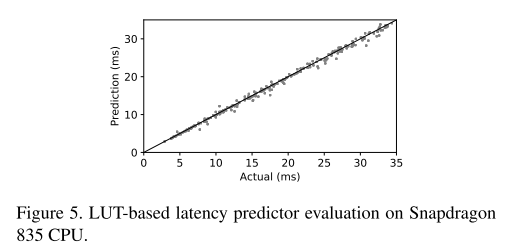
Energy Predictor
高斯过程GP
Energy计算方式:
- 使用power monitor代替电池, monitor保持4.2V恒压, 每隔200μm监测一次电流
- 让手机保持18s的空闲状态(计算空闲电流)
- 网络前向1000次 Q=UIt=4.2Vx(运行电流-空闲电流)x时间
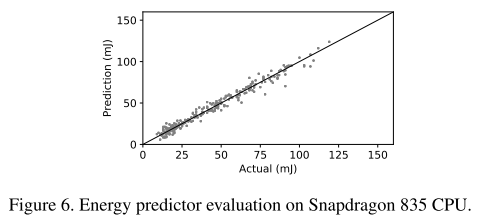
Experiments
MobileNet V2
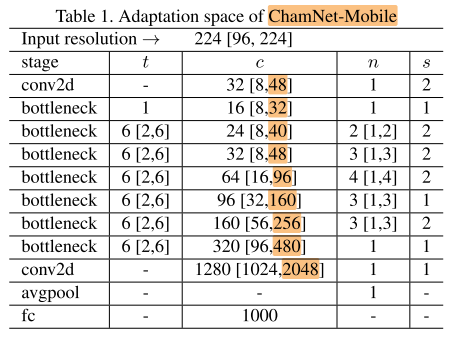
Acc-Latency trade-off
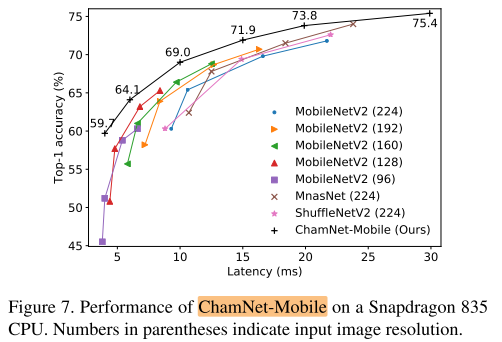
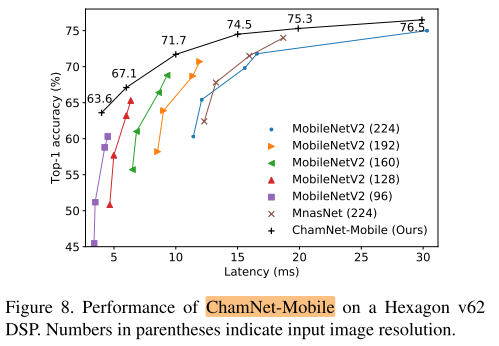
Acc-Energy trade-off
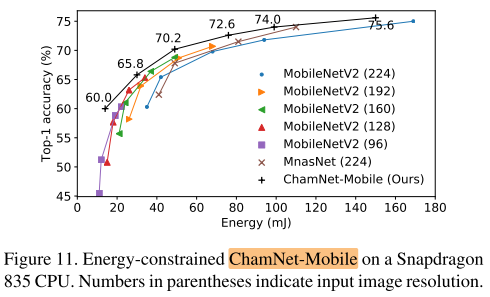
ResNet
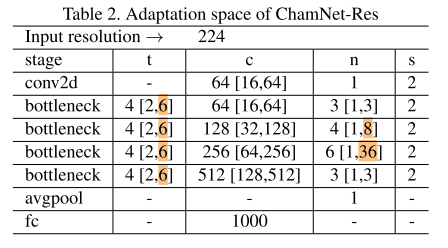
Acc-Latency trade-off
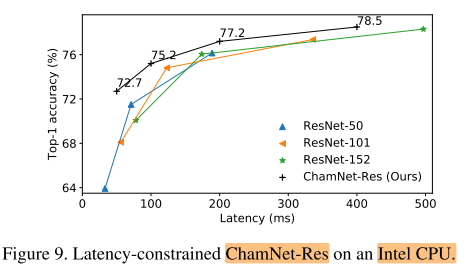
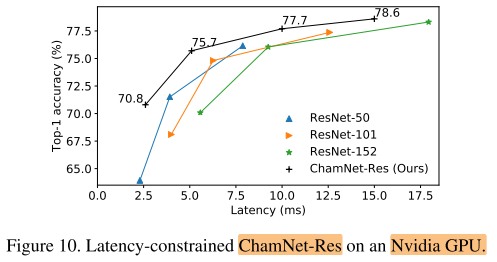
ChamNet-Mobile的FLOPs与Latency的分布
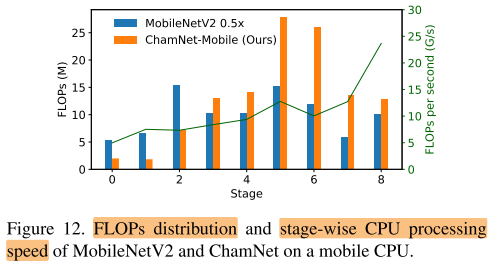
FLOPs与Latency的分布不成正比, 相关性也不大
Conclusion
Summary
- 方法很常规, 直接以Latency/Energy为目标搜索, 落地的价值比较高, (Facebook App上的3D照片)
- 不同平台对输入输出通道的敏感性的观察很有意思
To Read
Reference
Facebook 新研究:使用CNN将任何2D照片转换为3D (qq.com)


